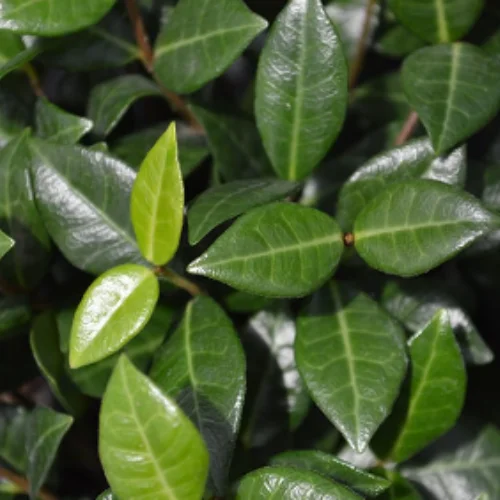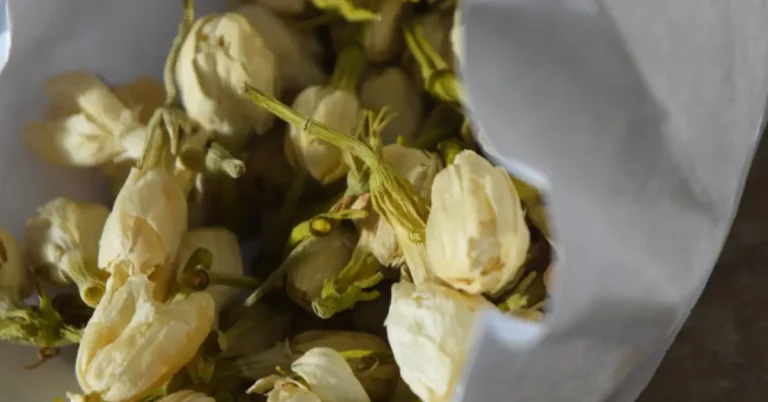Jasmine Minima: Asiatic Jasmine (A Turf Grass Alternative)

Jasmine Minima (Trachelospermum Asiaticum) commonly known as Asiatic jasmine & Dwarf Jasmine is a native plant of Asia. Like Star Jasmine, It is also not a true jasmine and it belongs to the family Apocynaceae. If you live in hardiness USA zones 7b to 10 and looking for a drought tolerant jasmine plant which may also serve as best ground cover or turfgrass alternative, this is for you.
It is fast growing evergreen vine plant that can tolerate heat and cold and grows well in shady areas. It can attain a height upto 6 m. The leaves (1-2 inches long) are leathery and flowers (white) are very fragnant. It has dense and fast spreading habit.
Confused in selecting Star jasmine and Asiatic Jasmine? For climbing or trellis i would recommend star jasmine and for ground cover and landscape my vote is for asiatic Jasmine.
Lets have a look at the Characterisctics, growing of Jasmine Minima, Difference between Confederate (star) jasmine and Asiatic Jasmine.
Characteristics
| Characteristic | Description |
| Scientific Name | Trachelospermum asiaticum |
| Common Names | Asiatic Jasmine, Dwarf Jasmine, Asian Jasmine |
| Plant Type | Evergreen vine or ground cover |
| Growth Habit | Spreading, trailing, climbing vine |
| Height | upto 6 m |
| Spread | Spreads vigorously |
| Foliage | Small, oval-shaped glossy leaves |
| Flower | Fragrant white flowers in clusters |
| Bloom Time | Late spring to early summer |
| Sun Exposure | Full sun to partial shade |
| Soil Type | Well-drained, pH 5.5 to 7.0 |
| Watering Needs | Moderate, regular watering |
| Hardiness Zones | USDA Zones 7b-10 |
| Uses | Ground cover, erosion control, weeds control and container planting, hanging baskets. |
| Maintenance | Low maintenance |
| Propagation | Stem cuttings |
| Pests/Diseases | Generally pest and disease resistant |
Asiatic Jasmine Plant




Jasmine Minima Growing and Care
Soil
It does not require specific soil type. it can be grown in wide range of soils with good drainage. Soil with pH more than 8 is not suitable for this plant. It grows rapidly in the moist soil enriched with organic matter.
Sunlight
It does best in partial shade. However, It can be grown in full sun to partial shade.
Watering
It is drought tolerant plant but newly planted plant requires frequent irrigation at 3 to 4 days interval keeping in view the heat spell and rainfall. Later on, once established, watering period extends.
Temperature and Humidity
Being a Tropical plant, Asiatic jasmine thrives in humidity conditions and does not like longer heat periods and cold. However, it can tolerate evenfrost conditions and can withstand at -10°C.
Fertilizers
It does not require frequent fertilizers. Providing balanced fertilizers at the beginning is enough.
Growing Benefits

Propagation
Propagating Asiatic jasmine through cuttings is easy process. Here’s a step-by-step guide:
- Select Healthy Plants: Choose a healthy Asiatic jasmine plant from which to take cuttings. Look for vigorous, disease-free stems.
- Take Cuttings with Sharp Tools: Take a sharp, clean pruner or a knife. With knife or pruner, take 4-6 inches long cutting. Strip the leaves from the bottom half of the cutting, and dip the end into a rooting hormone.
- Prepare Potting Mix: Prepare a well-draining potting mix. A mixture of equal parts perlite and peat moss works good. Moisten the mix slightly before planting the cuttings.
- Plant Cuttings: Place the cut end of each cutting into the prepared potting mix. Plant them about 1-2 inches deep.
- Provide Ideal Conditions: For indoors, place the pot in a warm, bright location with indirect sunlight and whereas for outdoors, place in shade area. Keep the potting mix consistently moist but not waterlogged. You can cover the pot with a clear plastic bag or use a propagation tray to maintain high humidity around the cuttings.
- Monitor Growth: Check the cuttings regularly for signs of growth and ensure the potting mix remains moist.
- Transplanting: After four weeks, there will be signs of growth and eight weeks or more when there are several leaves, they are ready to be transplanted into individual pots or directly into the garden.
- Care for New Plants: Once established, continue to care for the new plants as you would for mature Asiatic jasmine, providing regular water, fertilizer, and pruning as needed.
Common Pests & Plant Diseases
Asiatic jasmine problems are rare. There is no serious attack of insect pests on asiatic jasmine. If you notice sooty mold signs, this is due to whiteflies and insecticidal spray is sufficient. Among the diseases, leafspot by the fungus Cercospora is the only disease that comes with light brown spots with a red-purplish borders on the leaves. It is usually not severe.
Difference Between Star (Confederate) Jasmine vs Asiatic Jasmine
| Feature | Star Jasmine | Asiatic Jasmine |
| Plant Type | Climbing Vine | Ground Cover |
| Leaves | Larger Leaves | Smaller than star jasmine |
| Flowers | Fragrant | Fragrant but Asiatic jasmine is Primarily grown as ground cover |
| Hardiness | Zones 8-11 (USDA) | Zones 7-10 (USDA) |
| Uses | Trellises, fences, walls, containers | Ground cover, slopes, road side walks, landscape, hanging baskets. |
People Ask
Q: Does Asiatic Jasmine flower?
A: Yes, asiaitic jasmine produce flowers, however, it is mainly grown as ground cover or turfgrass alternative. The flowers are fragrant and star shaped.
Q: Can i grow jasmine minima in container?
A: Yes, jasmine minima (asiatic jasmine) can be grown in containers. Choose a container at least 14 inches wide with large hole drains. Fill the container with potting mix and slowly water it until water comes out of the drain holes.

I am Yasir Riaz, an Agronomist for more than a decade. Helping local farmers and Gardeners to improve their crops and Gardens and overall productivity. In addition to my work in agriculture, I have also delved into the digital world as an SEO writer and blogger. Through my blog, I aim to educate and inspire others about the Chameli Flower (Jasmine).






